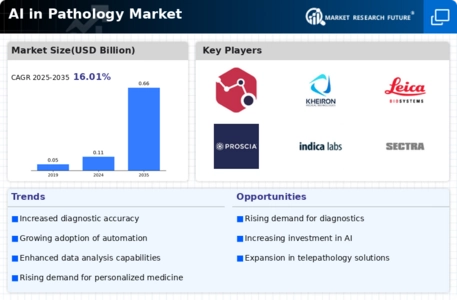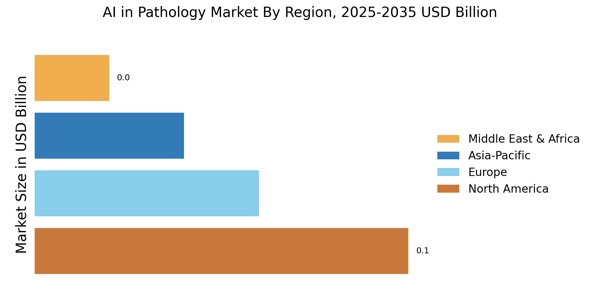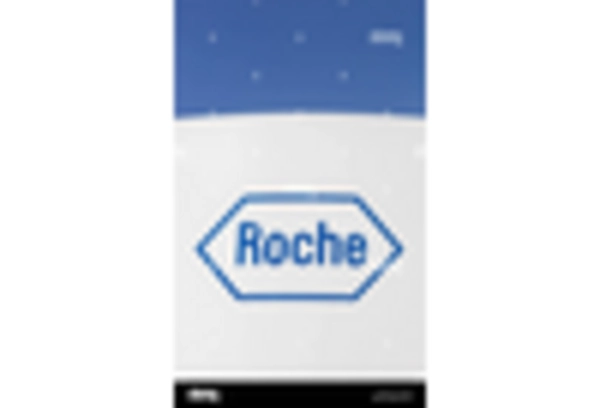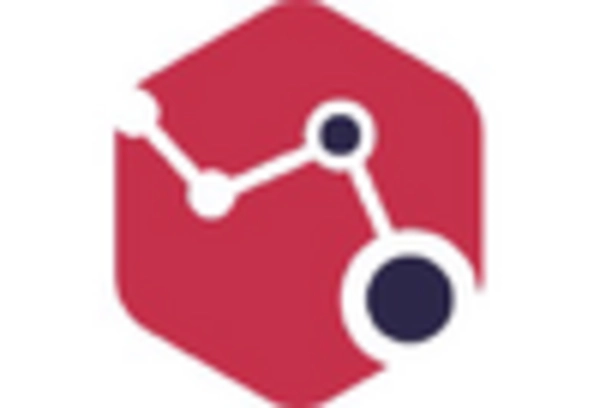Enhanced Diagnostic Accuracy
The AI in Pathology Market is witnessing a surge in demand for enhanced diagnostic accuracy. AI algorithms, particularly those utilizing deep learning techniques, have demonstrated the ability to analyze complex pathology images with remarkable precision. Studies indicate that AI can reduce diagnostic errors by up to 30%, thereby improving patient outcomes. This capability is particularly crucial in identifying malignancies at early stages, which can significantly influence treatment decisions. As healthcare providers increasingly recognize the potential of AI to augment human expertise, the integration of these technologies into pathology workflows is becoming more prevalent. Consequently, the AI in Pathology Market is expected to expand as institutions seek to leverage AI for more reliable and efficient diagnostic processes.
Cost Efficiency in Pathology Services
Cost efficiency is emerging as a pivotal driver in the AI in Pathology Market. The implementation of AI technologies can streamline pathology workflows, reducing the time required for analysis and interpretation of samples. For instance, AI systems can automate routine tasks, allowing pathologists to focus on more complex cases. This not only enhances productivity but also leads to significant cost savings for healthcare facilities. Reports suggest that AI can potentially decrease operational costs by up to 20%, making pathology services more accessible. As healthcare systems strive to optimize resource allocation, the adoption of AI solutions is likely to accelerate, further propelling the growth of the AI in Pathology Market.
Regulatory Support for AI Innovations
Regulatory support is becoming increasingly vital for the advancement of the AI in Pathology Market. Governments and regulatory bodies are recognizing the potential of AI technologies to enhance healthcare delivery and are establishing frameworks to facilitate their integration into clinical practice. Initiatives aimed at expediting the approval process for AI-based diagnostic tools are emerging, which could lead to faster market entry for innovative solutions. This supportive regulatory environment encourages investment in AI research and development, fostering innovation within the pathology sector. As regulations evolve to accommodate AI advancements, the AI in Pathology Market is expected to experience accelerated growth, driven by a more favorable landscape for technology adoption.
Growing Demand for Personalized Medicine
The shift towards personalized medicine is significantly influencing the AI in Pathology Market. As treatments become increasingly tailored to individual patient profiles, the role of pathology in determining the most effective therapeutic strategies is paramount. AI technologies facilitate the analysis of vast datasets, enabling pathologists to identify biomarkers and genetic variations that inform personalized treatment plans. This trend is supported by the increasing prevalence of chronic diseases, which necessitate more precise diagnostic approaches. The AI in Pathology Market is thus poised for growth as healthcare providers seek to integrate AI-driven insights into their diagnostic and treatment protocols, enhancing the overall efficacy of patient care.
Integration of AI with Digital Pathology
The integration of AI with digital pathology is a transformative trend within the AI in Pathology Market. Digital pathology allows for the digitization of glass slides, enabling pathologists to analyze samples remotely and efficiently. When combined with AI algorithms, this integration enhances the ability to detect anomalies and patterns in pathology images. The market for digital pathology is projected to grow significantly, with estimates suggesting a compound annual growth rate of over 10% in the coming years. This synergy not only improves diagnostic accuracy but also facilitates collaboration among healthcare professionals, thereby driving the adoption of AI technologies in pathology practices. As such, the AI in Pathology Market is likely to benefit from this technological convergence.


















Leave a Comment